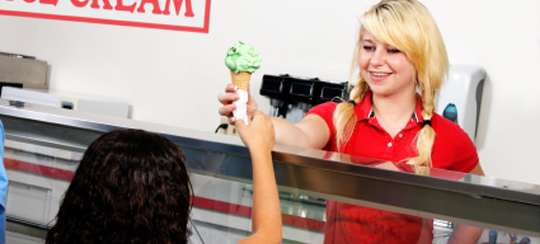
As a business owner, you probably don’t have a set schedule. You work until the work gets done (or you drop from exhaustion). But you also have some flexibility. If your kid gets sick or needs a last-minute ride to soccer practice, you can usually walk out the door and deal with your personal life. If you spent any time in the corporate world prior to opening your business, you probably enjoyed a salaried job, which meant that you didn’t have to punch a time clock. As long as you met your boss’s expectations, you could leave early to play golf or go in late on occasion.
Your employees’ reality might be much different. If you’re operating a retail, food or hospitality business, your employees are probably hourly. They’re supposed to show up on time to work their shifts, and they’re supposed to stay until their shift is over. You expect them to be reliable and responsible and you might be tempted to start dishing out the discipline if they’re consistently late or absent. But, replacing employees is expensive.
A study by Sibson and Company found that in order to replace an employee at a fast-food restaurant, 7,613 children’s combo meals (at $2.50 each) must be sold to recoup the cost of hiring and training. Retail stores must sell 3,000 pairs of khakis (at $35 per pair) in order to replace a sales clerk. (1) Obviously it costs you a lot of money to fire an employee and hire his replacement. Before you start disciplinary actions, step back and see if you can find another solution.
An overwhelming number of minimum-wage employees are young; according to the U.S. Department of Labor, half of all workers earning minimum wage are 25 years old or younger. (2) Some of the best employees are young people who are high-performers in other areas of their lives. They might be high school or college students who are swamped with mid-terms, extra-curricular activities and volunteer obligations. These youngsters are typically sharp, hard-working and friendly. It’s well worth working around their busy schedules in order to keep them with you. That might mean changing the way you prepare the schedule so that both you and your employee can plan in advance for upcoming schedule conflicts.
Mitch Monson, co-founder of The Toaster Oven in San Francisco and Berkeley, has found that offering flexibility to students helps his retention rate, “We let our employees know that we care about them. We offer them flexibility that the competition doesn’t. We’re willing to let them take time away for school or vacations. As a result, our turnover is about a third of the average for our industry.” (For more about The Toaster Oven, see our entire interview with Mr. Monson)
Other employees may be struggling as single parents or caretakers of elderly family members. They might be working two jobs, or suffering from chronic illness. While it’s easy in this economy to find other employees, it’s not always easy to find people who provide your customers with great service or are trustworthy. If your employee is a real asset while she’s at work, but is having issues with attendance, find out why. Sit down together and see if a solution can be found. Perhaps she needs to arrive a few minutes later in order to meet personal obligations. Or perhaps an agreement can be made with another employee to cover her hours if an emergency situation arises.
According to Eric Schlosser, author of Fast Food Nation, turnover rates in the fast-food industry are between 200 and 400 percent annually. It’s well worth your time to find solutions for employee retention. Otherwise, you’ll need to find a way to sell a whole lot more kids’ meals.
(1) Success Performance Solutions. “Employee Turnover is Expensive.”
(2) U.S. Dept. of Labor Bureau of Labor Statistics. Characteristics of Minimum Wage Workers: 2010.



































